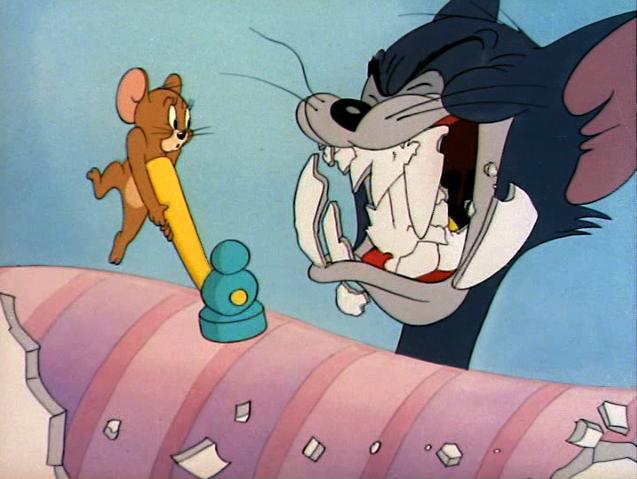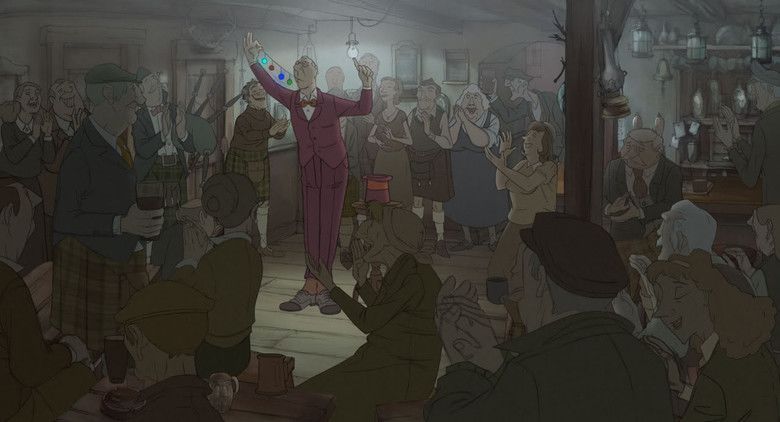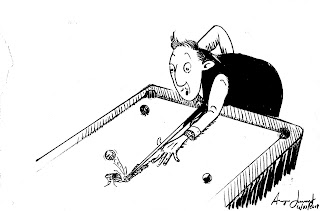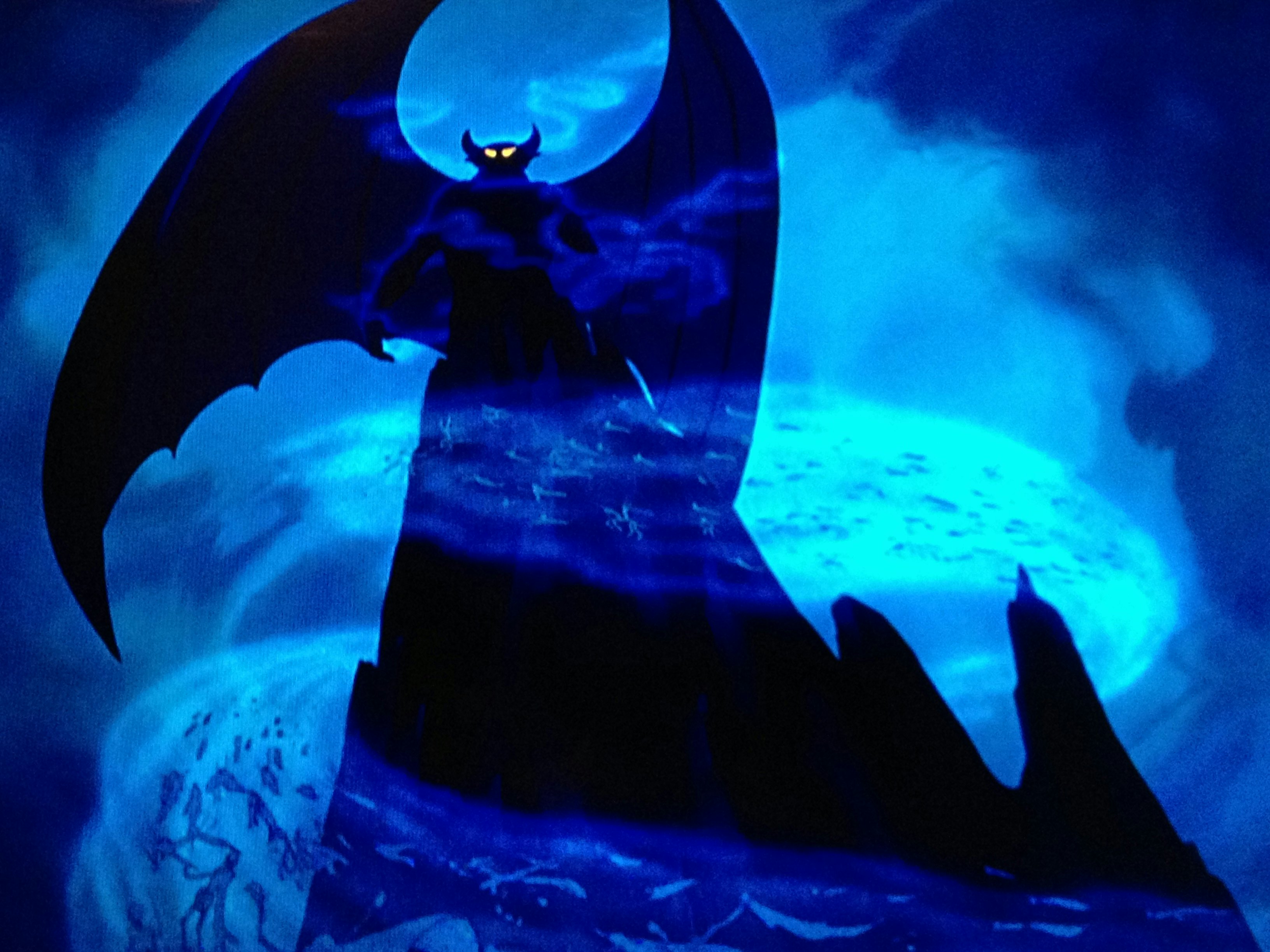Of course this is most definitely not a unique idea. Animation and comedy characters go back to the early days of the medium, with characters from the Fleischer Brothers and Walt Disney to more well known slapstick stars, like Tom & Jerry and the cast of Looney Tunes. These cartoons, as they are better known, showcase some great over-exaggerated comedy routines, from the endless violence from Tom & Jerry, to the more tame- yet still hilarious antics of Mr. Bean (The Animated Series).
Like Mr. Bean, my idea was to have a solo character encounter or find himself in a series of predicaments, much like that of what silent comedy in the 1920's revolved around.
The early Fleischer Studios cartoons had such comic characters as 'Popeye', 'Betty Boop' and 'Koko the Clown'.
The hilariously violent cat and mouse teaming of "Tom & Jerry", showcases some comedy routines that the kids shows of today tones down on very much!
My answer was a character by the name of "Silent Stanley", a young, incredibly slim and wiry individual, dressed in 1920's working class American clothes that are too small for his frame. Already we have an individual who stands out from the crowd. The style is not anatomically correct, but not too exaggerated to make him look un-human. The first sketch of the character I drew, shown a rather confident individual who looked a bit like Max Linder. I liked the look, even in that early stage, but I think the limbs could have been longer and thinner to allow for more comic movements.
Initial drawings of the "Silent Stanley" character.
I found myself listening to a lot of comedic film soundtracks, most notably the work of Leroy Shield and his scores for the Hal Roach "Laurel & Hardy" and "Our Gang" comedies. These scores, particularly the music for the short "Perfect Day" (1929), are amongst my favourite pieces of music. Just like a lot of film and theatre, the score is a fundamental piece of the overall presentation. 'The Cuckoo Theme' (composed by Marvin Hatley), was not originally written in mind for L&H, but it has become synonymous with them and really compliments the two characters, with the two motifs (see this video for an audio clip of Hatley talking about his famous theme). The music is very much of the era also, with the traditional orchestral sound, producing upbeat and catchy accompaniment, to slow melancholy scores, providing what was happening onscreen. In the silent L&H shorts, sometimes instruments such as a slide whistle or washboard would be used to signify say a fall, or a kick up the backside, which the average audience member would find far funnier than the authentic sound that action would make. The sound/music technicians used the lack of sound to their advantage to create something even better for these earlier silent films.
One of my favourite videos showing '"The Beau Hunks" orchestra providing live accompaniment to a silent "L&H" short, with Leroy Shield's original arrangement.
It would be a great idea to maybe source a public domain music piece of a similar style to these arrangements and work a story/routine around it. This is very similar to what Disney did with "Fantasia" (1940), using classical pieces from famous composers to provide a beat for the animated character/object to follow.
My initial idea was to use stop motion, which I haven't ruled out completely. Having more experience in puppet and set making would be a big plus, however the space and costing of materials is another factor to consider. I may make a 3D sculptural maquette of the character to get a feel of how he may look in that medium. Sometimes a flat drawing can look strange or distorted when converted to a 3D form. As for the animation itself, I think maybe acting the movements out in live action and then rotoscoping would be a good experiment to try out. Of course this wouldn't mean copying the movements exact, but exaggerating them to heighten the comedic values.
The next concept drawing involved a gag routine which was inspired by both L&H in the short, "Brats" (1930), and Peter Sellers as Inspector Clouseau in "A Shot in the Dark" (1964), where both characters end up ripping the pool table with the wooden cue. A couple of days ago, I finished an animation test of this gag, using the original drawing and tracing it on Photoshop. I had about 20 layers, some for animation outline frames (e.g. one layer would be for an arm or face) and then I would have to animate the fill colour afterwards. As I have said before, I am fairly new to the 2D animation game, so my methods may not be the best option.
My initial idea was to use stop motion, which I haven't ruled out completely. Having more experience in puppet and set making would be a big plus, however the space and costing of materials is another factor to consider. I may make a 3D sculptural maquette of the character to get a feel of how he may look in that medium. Sometimes a flat drawing can look strange or distorted when converted to a 3D form. As for the animation itself, I think maybe acting the movements out in live action and then rotoscoping would be a good experiment to try out. Of course this wouldn't mean copying the movements exact, but exaggerating them to heighten the comedic values.
The next concept drawing involved a gag routine which was inspired by both L&H in the short, "Brats" (1930), and Peter Sellers as Inspector Clouseau in "A Shot in the Dark" (1964), where both characters end up ripping the pool table with the wooden cue. A couple of days ago, I finished an animation test of this gag, using the original drawing and tracing it on Photoshop. I had about 20 layers, some for animation outline frames (e.g. one layer would be for an arm or face) and then I would have to animate the fill colour afterwards. As I have said before, I am fairly new to the 2D animation game, so my methods may not be the best option.
Another early gag sketch which formed the basis of my recent animated test (see below).
Screengrab of my animation arrangements in Photoshop (a bit cluttered!).
.
Character turnaround which features a slightly different appearance. Not too keen of how he looks here, too stout.
Last night I finished a blue pencil sketch of the character, trying to lock down the final design. Today I traced the drawing in pencil and then scanned the tracing into Photoshop, where I digitised it and added colour. I think this is the strongest design yet, and the character definitely has a more comical characteristic about him, compared to the turnaround rendering.
Aged B&W version. The look I would like to replicate for the finished short.
So will this idea come to fruition? Only time will tell. I've been desperate to get a finished short film to my name, but working independently and in my spare time makes an individual realise how big the task actually is. I come up with these ideas because they are subjects that genuinely take my interest, so I would invest my time and money into them. Ideally studying Animation in University would be a big boost, both in confidence and support, with other people who can critique and offer suggestions on my ideas (and vice versa).
A pre-vis title card in the style of the silent Hal Roach comedies of the 1920's. The title is based on another gag idea I had involving a train.
In the meantime, any comments/critiques anyone has, please feel free to post below or on my Facebook page.
































